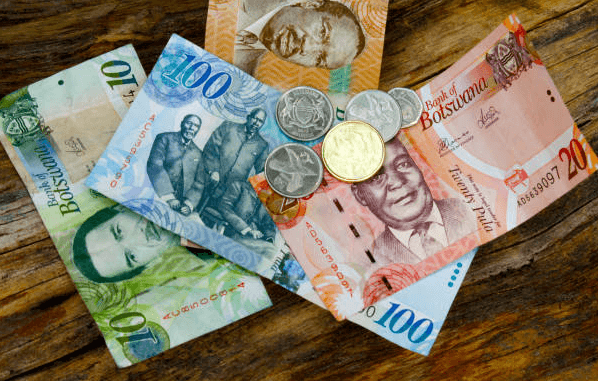Botswana, a landlocked country in Southern Africa, boasts a vibrant economy and a rich cultural heritage. To truly understand the essence of any country, one must delve into Botswana National Currency. In Botswana's case, that currency is the Botswanan Pula. In this article, we will explore the history, design, value, and usage of the Pula, along with its significance in Botswana's economy. So, let's embark on a journey to discover the heart and soul of the Botswanan Pula.
History of Botswana National Currency
The Botswanan Pula came into existence on the 23rd of August, 1976, replacing the South African Rand as the official currency of Botswana. The introduction of a national currency was a significant milestone for the country, signifying its sovereignty and economic independence. The name "Pula" holds great cultural and symbolic meaning as it translates to "rain" in Setswana, one of the national languages of Botswana. Rain, in Botswana, represents blessings, prosperity, and good fortune.
Botswana National Currency; Design and Features
The Botswanan Pula consists of banknotes and coins, each with its own unique design. The banknotes feature iconic symbols of Botswana, including wildlife such as zebras and elephants, as well as prominent national landmarks like the Okavango Delta. These designs not only showcase the country's natural beauty but also reflect its commitment to wildlife conservation and sustainable tourism.
To ensure the security of the currency, the banknotes incorporate various advanced security features. These features include holographic foils, watermarks, and raised print, making the Pula highly resistant to counterfeiting. Additionally, the coins of the Pula depict the national coat of arms on one side and different native wildlife species on the other.
Value and Exchange Rates
The value of the Botswanan Pula fluctuates in relation to other currencies, and its exchange rate is determined by various factors such as supply and demand in the foreign exchange market. It's important for travelers and businesses to stay updated on the current exchange rates to accurately convert their currency. Fluctuations in exchange rates can have a significant impact on the economy, particularly on industries such as tourism and exports.
Usage and Acceptance of Botswana National Currency
Within Botswana, the Botswanan Pula is the only accepted legal tender for transactions. The currency is widely accepted in various establishments, including hotels, restaurants, and shops throughout the country. Currency exchange services are readily available, allowing tourists to convert their currency into Pula for seamless transactions.
While the Pula is the primary mode of payment, credit cards are also accepted in many places, especially in urban areas. However, it's advisable to carry some cash for smaller establishments or when venturing into more remote regions where card acceptance may be limited. Additionally, alternative payment methods such as mobile wallets are becoming increasingly popular, providing convenient options for locals and visitors alike.
Botswana’s Economy and the Role of the Pula
Botswana's economy is known for its stability and consistent growth. The Botswanan Pula plays a crucial role in maintaining this stability. The currency is managed by the Bank of Botswana, the country's central bank, which implements monetary policies to ensure price stability and support economic development. The Bank of Botswana regulates the supply of money and monitors the exchange rates to promote a favorable business environment.
Impact of Tourism on the Pula
Tourism is a vital industry in Botswana, attracting visitors from around the world to experience its breathtaking wildlife reserves, national parks, and cultural heritage. The influx of tourists has a direct impact on the demand for the Botswanan Pula. As tourists exchange their currency for the Pula, it contributes to the local economy and helps sustain businesses in the tourism sector.
For travelers planning a visit to Botswana, it's important to consider currency exchange before arriving. Understanding the exchange rates and planning accordingly can help optimize their travel budget and ensure a smooth and enjoyable experience.
Botswana National Currency in Everyday Life
In everyday life, the Botswanan Pula is used for various transactions, including purchasing goods and services, paying bills, and conducting business transactions. Having a basic understanding of the currency is essential for both residents and visitors to navigate the local economy effectively. It also offers an opportunity to appreciate the cultural significance of the Pula and its role in Botswana's society.
FAQs about the Botswanan Pula
- What are the denominations of the Botswanan Pula?
The Pula is available in banknotes with denominations of 10, 20, 50, 100, and 200 Pula, and coins with denominations of 5, 10, 25, and 50 Thebe.
- Can I use the Pula in neighboring countries?
The Botswanan Pula is only accepted within Botswana. However, some establishments near the borders may accept other currencies like the South African Rand or the Namibian Dollar.
- Are there any restrictions on currency exchange?
There are no significant restrictions on currency exchange in Botswana. However, it's advisable to exchange currency at authorized banks or currency exchange bureaus for better rates and security.
- What security features are there on the banknotes?
The Botswanan Pula banknotes incorporate advanced security features such as holographic foils, watermarks, raised print, and security threads to prevent counterfeiting.
- How can I stay updated on the exchange rates?
Exchange rates for the Botswanan Pula can be obtained from banks, currency exchange platforms, or financial websites. It's recommended to check for the latest rates before exchanging currency.
Conclusion
The Botswanan Pula represents the economic and cultural identity of Botswana. As the national currency, it embodies the country's natural beauty, heritage, and economic stability. Understanding the Botswanan Pula is crucial for travelers and businesses alike, ensuring seamless transactions, budget planning, and an appreciation of Botswana's cultural heritage. So, whether you're exploring the Okavango Delta or visiting the Chobe National Park, make sure to embrace the Botswanan Pula and experience the essence of Botswana.
References
- Bank of Botswana. (n.d.). Banknotes and Coins. Retrieved from https://www.bankofbotswana.bw/currency/banknotes-and-coins
- Bank of Botswana. (n.d.). Currency Issuance. Retrieved from https://www.bankofbotswana.bw/about/who-we-are/currency-issuance
- Botswana Tourism Organisation. (n.d.). Travel Tips. Retrieved from https://www.botswanatourism.co.bw/travel-tips
